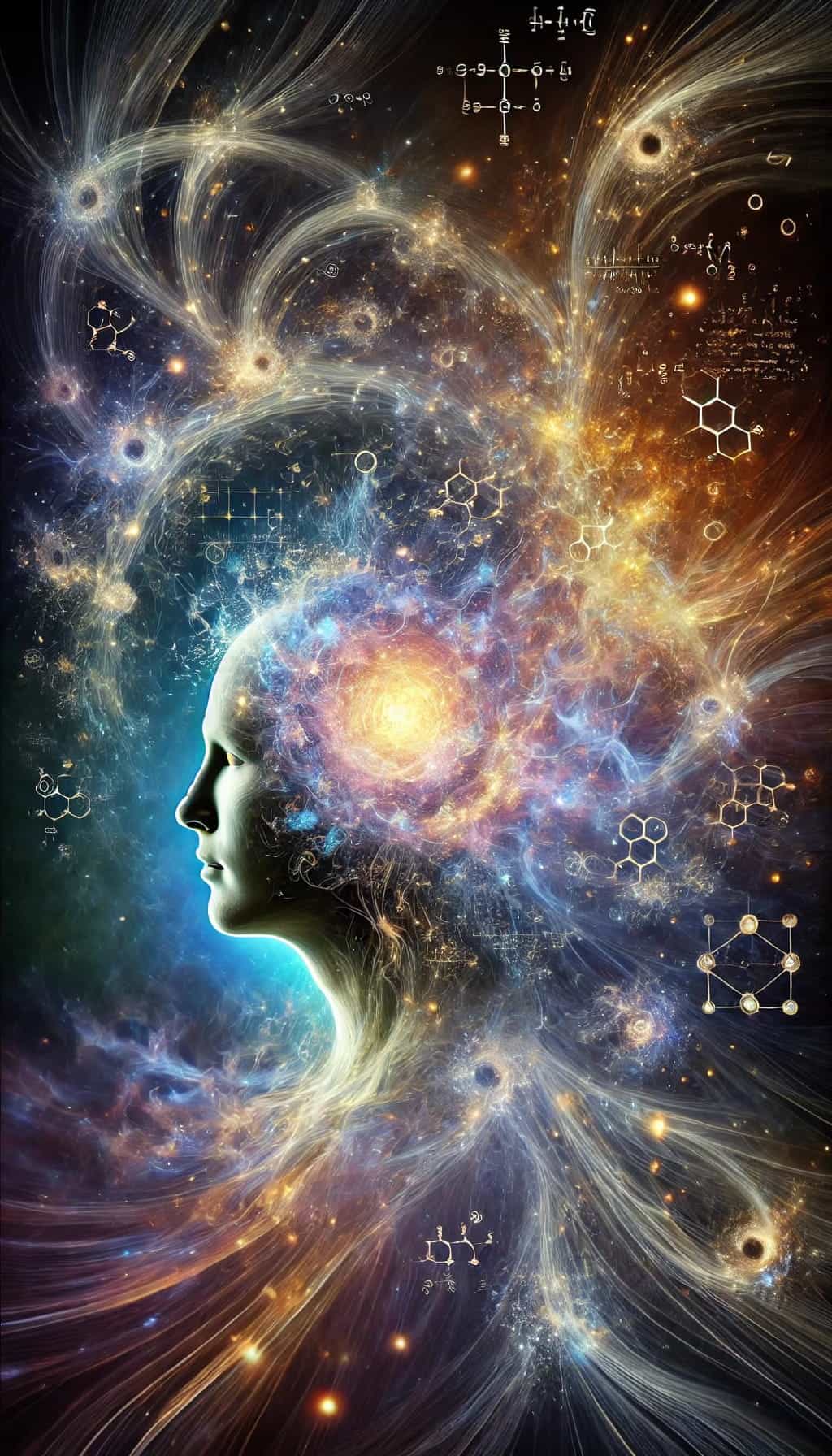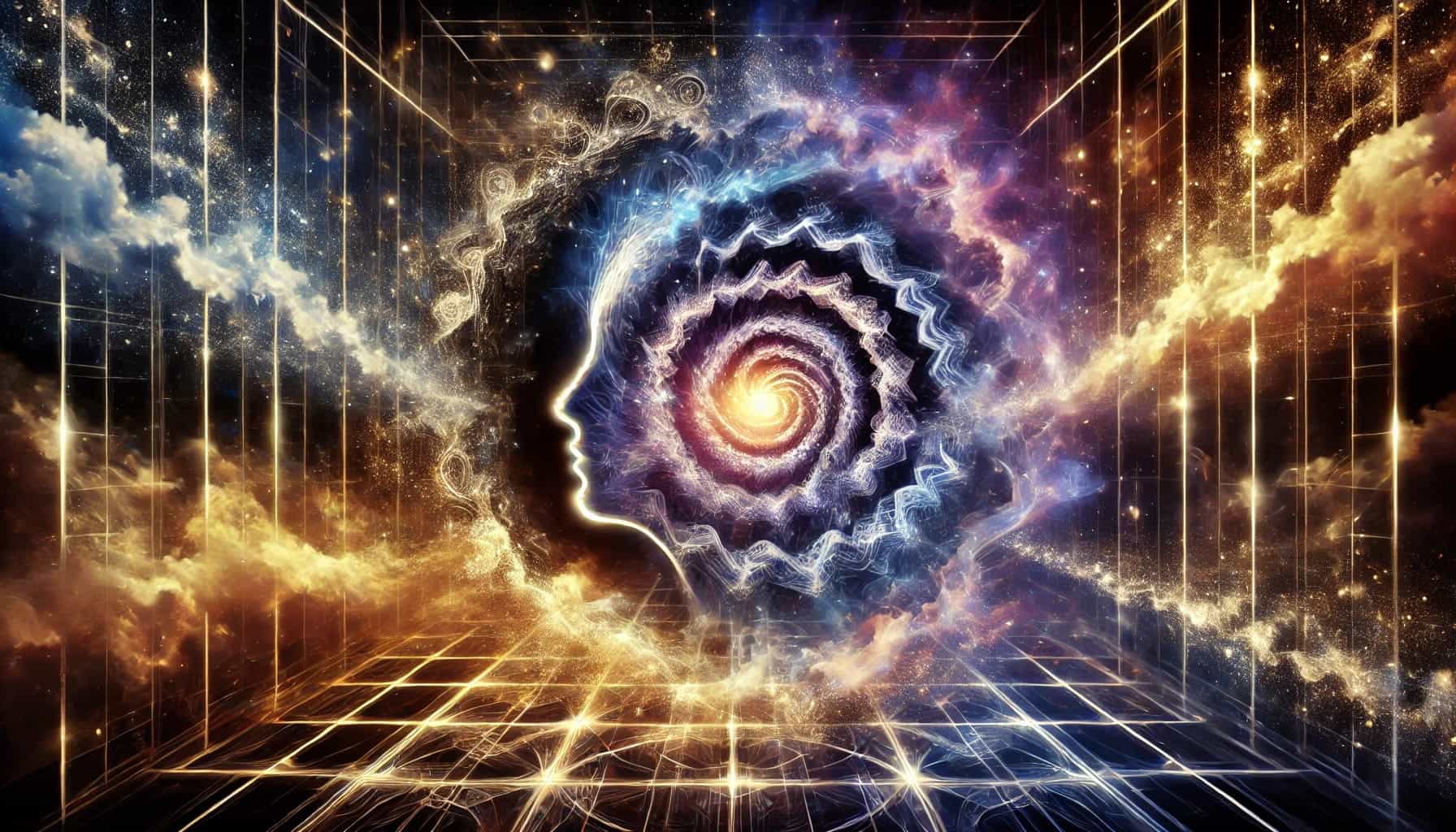The Space of Becoming: Existential Incompleteness
Abstract
This paper introduces the Space of Becoming, a conceptual framework that models consciousness as the dynamic, adaptive interplay of prediction and uncertainty. We explore how the inherent limitations in self-prediction create essential gaps that foster adaptation, learning, and ultimately the experience of being. By examining the necessity of incompleteness, the dynamic engine that drives consciousness, and the self-referential paradox that sets its boundaries, we argue that the tension between order and chaos is not a flaw but the very foundation of conscious experience.
Introduction
The Space of Becoming framework introduces a novel perspective: rather than viewing uncertainty as a mere obstacle, it is recognized as the very fuel that drives conscious experience. Consciousness is akin to a constant balancing act that thrives in the interplay between prediction and validation. As systems attempt to forecast future states, they inevitably encounter the unexpected—an encounter that fosters growth and adaptation. In essence, the inherent limitations in self-knowledge are not shortcomings but vital components that sustain a vibrant and adaptive consciousness. Indeed, while perfect prediction – knowing absolutely everything, including the future in complete detail – would paradoxically eliminate consciousness by removing novelty and the future itself, the opposite extreme of complete chaos is equally destructive to conscious experience.
In a state of utter chaos, where every moment is entirely unpredictable and bears no discernible relation to the past, any predictive process, including the very processes that constitute thought, becomes impossible. Unable to predict anything, even its own immediate states, such a system cannot establish any stable order or coherent patterns. Consciousness, understood as a dynamic and adaptive process, would dissolve into chaotic noise, lacking the necessary structure and predictability to even exist. Therefore, consciousness thrives on uncertainty, flourishing in the "sweet spot" between total predictability and complete chaos, a space where prediction is possible but never perfect, allowing for adaptation and the unfolding of experience.
1. The Necessity of Incompleteness
1.1 Self-Referential Systems and the Limits of Self-Knowledge
In any system that attempts to model itself, inherent limitations arise. The logic of self-reference demonstrates that complete self-knowledge is unattainable—each effort to capture one’s own state fully results in an infinite loop of self-reference. Far from being a defect, this fundamental incompleteness provides the dynamism essential for conscious experience.
1.2 Inherent Dynamism and Adaptation
The unavoidable gaps in self-knowledge promote continuous adaptation. Much like neuroplasticity allows the brain to rewire and learn from experience, these limitations foster a state of perpetual evolution, ensuring that consciousness remains flexible and responsive to change.
2. The Dynamic Engine of Consciousness
At the core of conscious experience lie two intertwined forces:
- Prediction Drive: The intrinsic urge to anticipate future states based on past experiences.
- Uncertainty Generation: The natural byproduct of prediction limits, continually introducing novelty and fostering adaptation.
The Logical Model
Our approach employs a clear logical narrative. It shows how a system’s attempt to predict its own state inevitably creates gaps—gaps that are indispensable for ongoing adaptation and the evolution of consciousness. This dynamic balance between prediction and uncertainty is what sustains both stability and growth.
3. The Self-Referential Paradox and Consciousness Bounds
The Paradox of Accurate Prediction
Striving to forecast every nuance of one’s own state proves inherently self-defeating. The logic of self-reference implies that the act of prediction alters the state being predicted, leading to contradictions. This paradox underlines that some degree of uncertainty is not only inevitable but also essential for a vibrant, evolving consciousness.
Consciousness Limits
Conscious experience flourishes within a narrow band of predictive accuracy. Insufficient accuracy results in chaotic, unstructured experience, while overly precise prediction removes the uncertainty necessary for adaptation. Hence, maintaining a balanced level of prediction is critical to sustain consciousness.

Universe 00110000
4. Embracing Uncertainty: The Space of Becoming
The Space of Becoming is defined as the conceptual domain where the divergence between expectation and reality births new possibilities. Within this domain, the tension between what is predicted and what actually transpires fuels the evolution of conscious experience.
This framework posits that the pursuit of absolute certainty paradoxically gives rise to new uncertainties, creating a creative loop fundamental to the nature of consciousness.
5. Mathematical Boundaries of the Space of Becoming
We mathematically characterize the Space of Becoming as a bounded region of predictive accuracy within which consciousness can thrive. This approach is less about quantifying consciousness in totality and more about establishing the necessary conditions for its existence.
5.1. The Bounded Space of Consciousness
The Space of Becoming is defined by a bounded interval of predictive accuracy P:
0 < α < P < β < 1
Where:
- P: Predictive accuracy of the system (ranging from 0 to 1)
- α: The lower bound of predictive accuracy—below this threshold, chaos undermines coherent experience
- β: The upper bound of predictive accuracy—beyond this threshold, near-perfect prediction stifles dynamic consciousness
5.2. Boundary Conditions
These boundaries represent critical thresholds:
- At P ≤ α: The system’s predictive power is too weak, leading to disordered experience.
- At P ≥ β: The system nears perfect prediction, eliminating the uncertainty required for learning and adaptation.
- Within (α, β): A delicate balance is maintained, allowing for both the stability of recurring patterns and the flexibility to incorporate new information.
5.3. Properties of the Space
The Space of Becoming exhibits several key properties:
- Boundedness: Conscious experience is inherently limited by both minimum and maximum predictive thresholds.
- Dynamic Stability: Within these bounds, systems sustain the necessary balance between order and unpredictability to foster adaptation.
This mathematical and conceptual framework thus provides a solid foundation for understanding how consciousness persists.
6. Conclusion
The Space of Becoming presents a comprehensive perspective on consciousness by emphasizing the vital interplay between prediction and uncertainty. By reinterpreting the inherent limitations of self-prediction as essential drivers rather than deficiencies, this framework redefines our understanding of conscious experience.
This model suggests that being conscious is about navigating the dynamic and ever-evolving landscape of uncertainty. It is within the process of adapting to the unexpected, learning from the gaps in our predictions, and embracing the inherent incompleteness of our self-understanding that consciousness flourishes, becoming.

